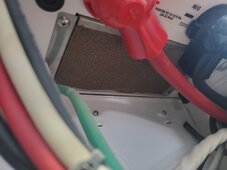Hello,
I've had this inverter for the past 7 years. Overwall it worked great beside throwing now and then a F63 error (AC Overload) when turning off the generator. I've been in discussions many times with Schneider on this with no progress.
In the past few days, after the generator running for about 1.5h (to charge the batteries), the inverter is starting to throw a "FET1 Over Temperature" warning. Room temperature hasn't much changed in 7 years, airflow is OK, fans seem ok on the inverter, etc.
I've called Schneider to see if I could get some documentation on cleaning up the fans and since I'm not an installer, they won't share anything. Has anyone done it in the past? I would like to make sure both fans are working and remove any dust from the beast before considering replacing it with a XW6848 Pro.
Thanks!
I've had this inverter for the past 7 years. Overwall it worked great beside throwing now and then a F63 error (AC Overload) when turning off the generator. I've been in discussions many times with Schneider on this with no progress.
In the past few days, after the generator running for about 1.5h (to charge the batteries), the inverter is starting to throw a "FET1 Over Temperature" warning. Room temperature hasn't much changed in 7 years, airflow is OK, fans seem ok on the inverter, etc.
I've called Schneider to see if I could get some documentation on cleaning up the fans and since I'm not an installer, they won't share anything. Has anyone done it in the past? I would like to make sure both fans are working and remove any dust from the beast before considering replacing it with a XW6848 Pro.
Thanks!



![DSCN4384[1].JPG](/data/attachments/203/203515-500cf8d474a92176cb39bc5f39ecd5a4.jpg)



